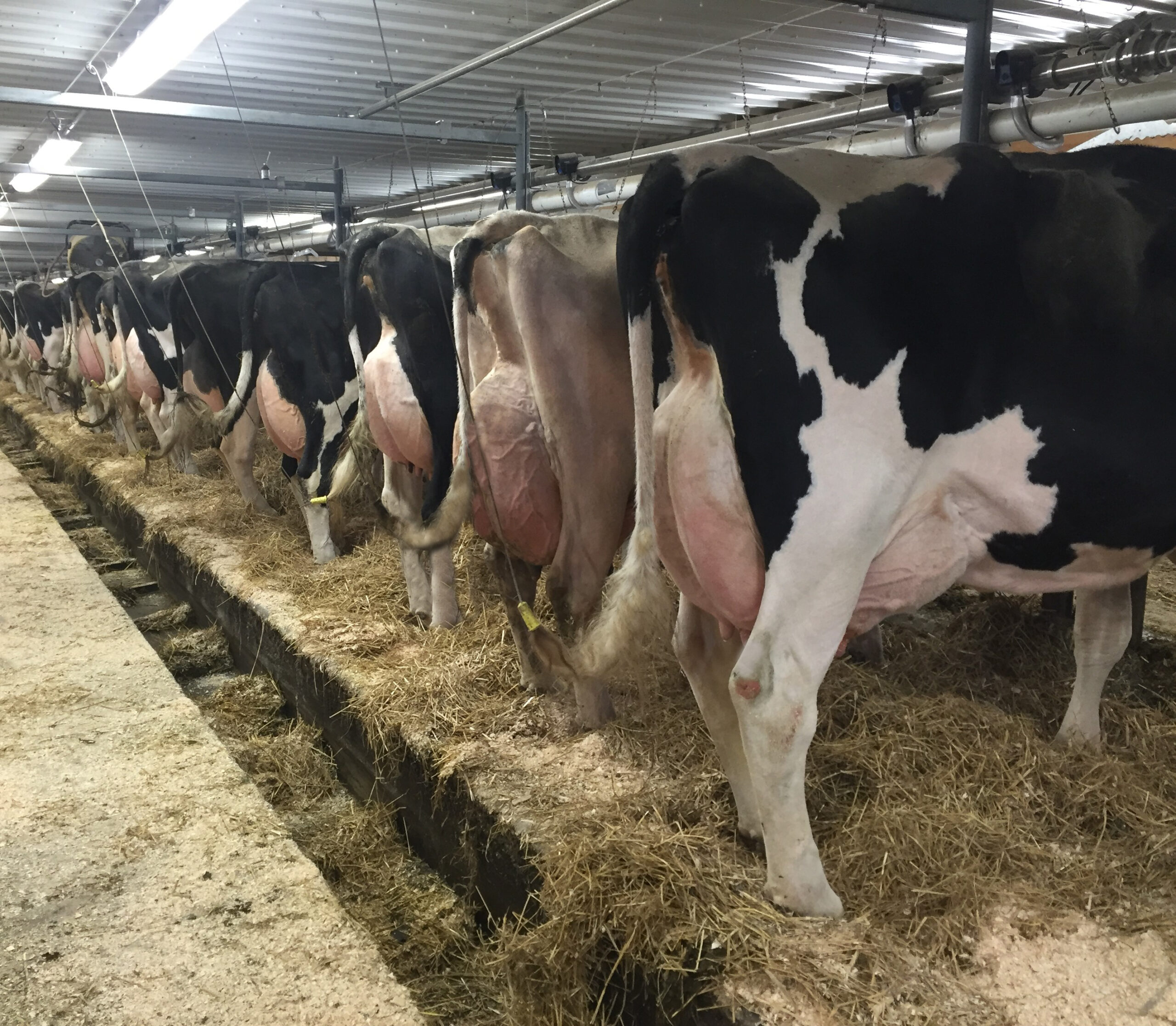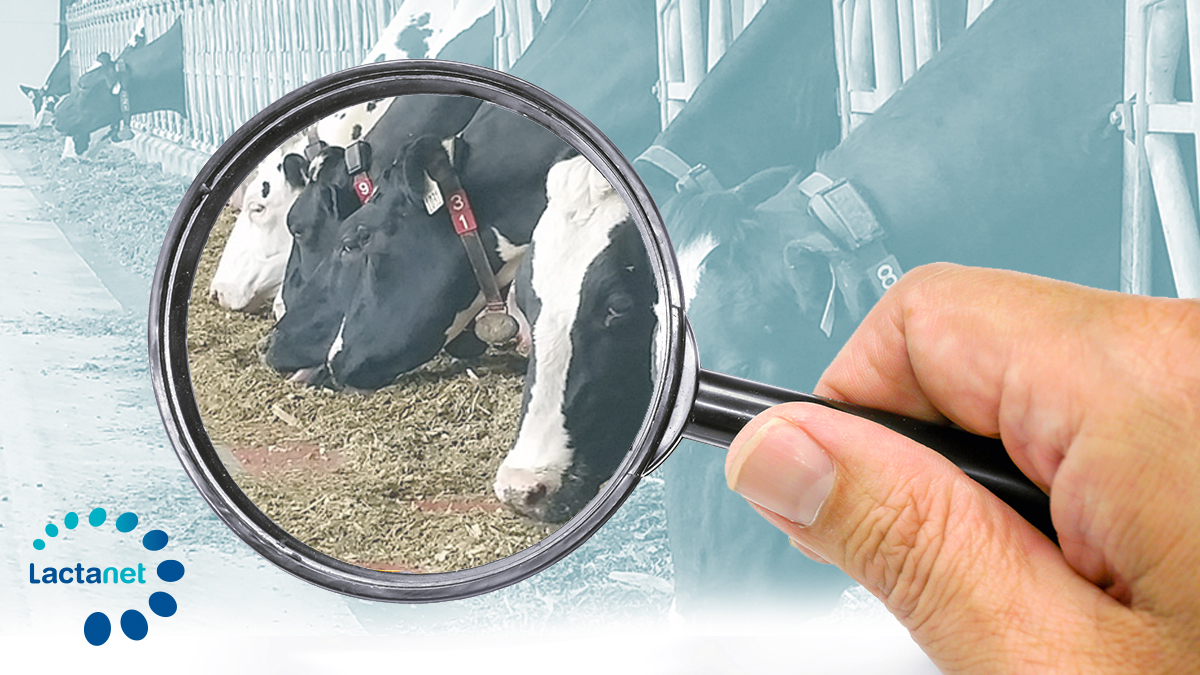Your data is trying to tell you something… are you listening?
- October 16, 2020
Your herd management data is indispensable for measuring performance and making progress. Monitoring management criteria and the actions put into place to improve them have a definite impact on herd profitability. The following are three situations where Lactanet data, services and tools were the determining factors for improving herd performance in herds served by our advisors.
Situation 1: The Five Keys to Success Using the Transition Cow Index
Stirling Dorrance, Lactanet advisor in the Atlantic region, works hard to help his clients improve on various aspects of herd management. He analyzes their milk recording data and certain management indicators for factors that limit the performance and profitability of their herds. One of his preferred indicators is the Transition Cow IndexMC. He suggests that his clients apply the five key elements below that have a direct impact on transition problems:
How to reduce the risk of transition failure:
- Provide adequate space at the feed bunk
- Reduce stress related to group changes
- Provide adequate stall and pen dimensions
- Provide a comfortable resting surface
- Feed a balanced ration according to predicted calving date
When visiting a client in December of 2018, Stirling noted high negative Transition Cow Index (graph 1) that indicated issue with dry cow management. For this client, as is often the case, building a new barn was not an option that could be considered in the short term. The improvements would therefore have to be made in the existing facilities. He proposed that the client revise their dry cow program by improving the space at the feed bunk, relocations, comfort and ration. In just one year’s time, the changes brought about an improved 90 day rolling average that went from -740 to +521!
Graph 1: The Evolution of a Herd’s Transition Cow Index:

Increasing the Transition Cow Index resulted in a reduction in calving problems, and the incidence of post-partum disease and consequently, the fresh cows were easier to manage. There were also less treatments and veterinarian fees and reproduction improved as well.
Situation 2: Pay attention to the peaks!
Lactation peaks are one of the herd criteria that are attentively monitored by Jennifer Donahue, strategic advisor. The Lactanet Mobile application offers a graph for Peak Milk Production by Parity using values from the 16 most recent milk recording tests. She recently took advantage of this useful tool with one of her clients whose herd was not producing at a satisfactory level. To identify the problem, the milk production peaks were analyzed early in 2020 (Graph 2).
The insufficient milk peaks suggested that the feeding for the cows in the transition period and at start of lactation was not optimal. One specific problem the advisor identified was that having a sole TMR ration, formulated for the whole herd, did not meet the needs of the cows at the start of lactation. She therefore recommended that corn and soybean meal be added as a « top dress » for the cows at the start of lactation. As you can see from the graph, this change made a rapid impact on the peaks. In less than two months, the 305 day milk value improved by $500 per cow.
Graph 2:

Situation 3: Take the necessary measures to reduce heifer raising costs!
The manager of a one hundred cow herd who uses the Lactanet Valued Advice service was looking for ways to improve profitability. His advisor identified the potential for significant gains for the farm in the area of heifer raising: growth was not optimal and the average age at first calving was close to 25 months with significant variation between animals. A recent study at the time indicated that the ideal age at 1st calving was about 23 months.
The advisor took the time to review the heifer raising program with the client to look for how they could improve in this area. The revised program emphasized the importance of weighing the heifers with a weight tape at key intervals in order have periodic, accurate growth measurements:
- At birth
- At weaning
- Every two months thereafter until first breeding
Regularly taking heifer weight measurements allows the producer to validate that the average daily gain is adequate for each age group. If a delay in gain is observed, it makes it easier to identify which period requires and adjustment. The objective set by the producer was for the heifers to reach a weight of close to 400 kg at first breeding, at the age of 12-13 months.
The application of the changes resulted in a younger age at first breeding (around one year of age) that was justified by the weight of the heifers. Particular attention was paid to reproduction and resulted in the reduction of the interval at first breeding between the heifers. After four years, the average age at first breeding is 12.2 months and the rigorous monitoring of growth and reproduction had reduced the interval at first breeding for the heifers; the average age at 1st calving went from 25 months to 21.7 months and the 305-day milk production for young cows also improved.
Table 1












